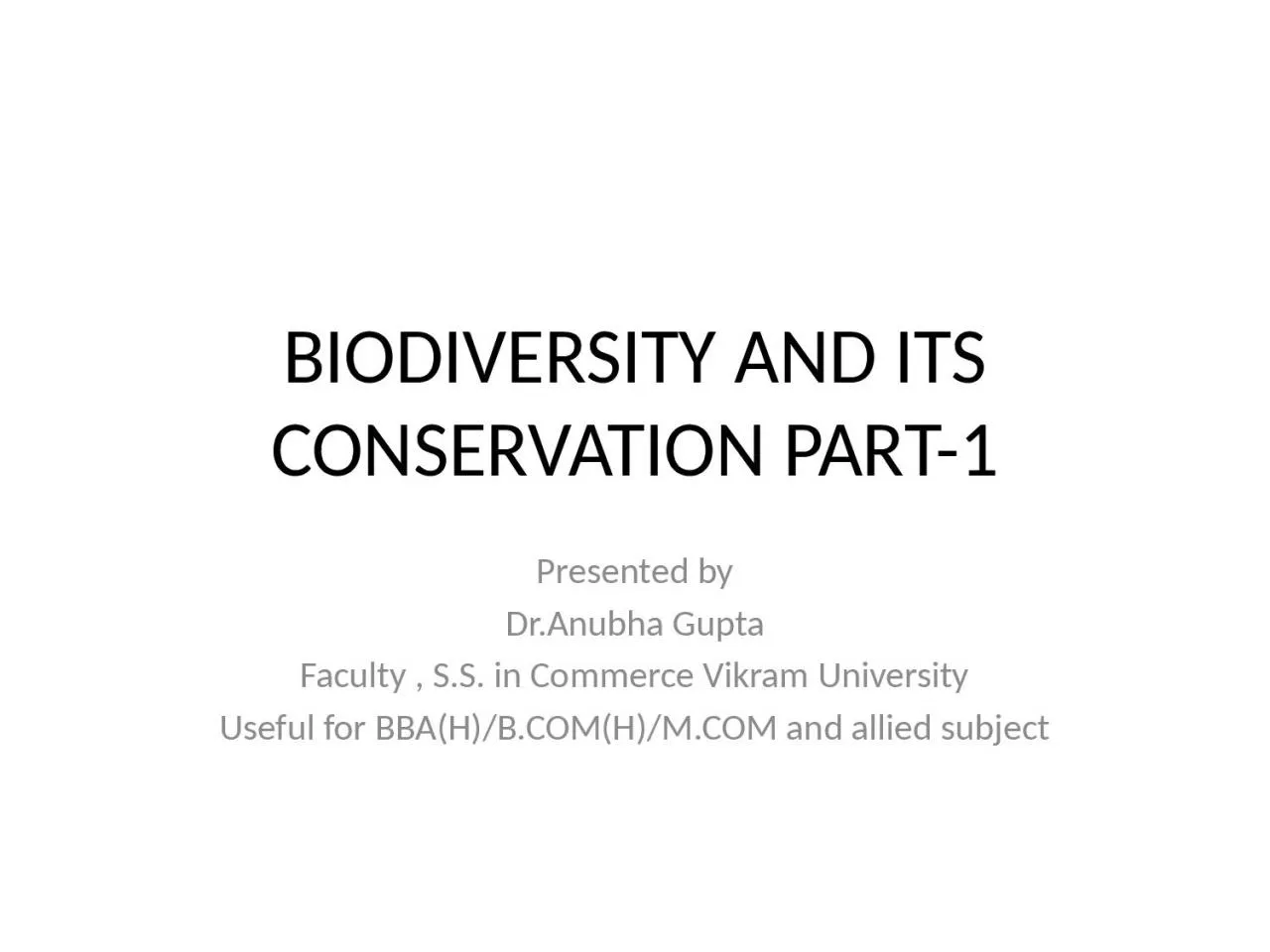

Presented by DrAnubha Gupta Faculty SS in Commerce Vikram University Useful for BBAHBCOMHMCOM and allied subject Biodiversity The term biodiversity was coined as a contraction of biological diversity by EO Wilson in 1985 ID: 1026965
Download Presentation The PPT/PDF document "BIODIVERSITY AND ITS CONSERVATION PART-1" is the property of its rightful owner. Permission is granted to download and print the materials on this web site for personal, non-commercial use only, and to display it on your personal computer provided you do not modify the materials and that you retain all copyright notices contained in the materials. By downloading content from our website, you accept the terms of this agreement.
1. BIODIVERSITY AND ITS CONSERVATION PART-1Presented byDr.Anubha GuptaFaculty , S.S. in Commerce Vikram UniversityUseful for BBA(H)/B.COM(H)/M.COM and allied subject
2. BiodiversityThe term biodiversity was coined as a contraction of biological diversity by E.O. Wilson in 1985. it is the variety and variability of living organisms and the ecological complexes in which they exist. biodiversity is the occurrence of different types of ecosystems, different species of organisms with the whole range of their variants and genes adapted to different climates, environments along with their interactions and processes. Biodiversity includes the genetic variability and diversity of life forms such as plants, animal microbes, etc. living in a wide range of ecosystems.
3. Types of Biodiversity
4. Genetic diversityGenetic diversity encompasses all the variety of different genetic information contained in animals, microorganisms and the plants. A single species of organisms with diverse genetic diversity portray more adaptability and survival mechanism against adverse environmental conditions compared to organisms of a single species with the same genetic make-up.
5. Genetic diversityGenetic diversity has the following importance:(i) It helps in speciation or evolution of new species;(ii) It is useful in adaptation to changes in environmental conditions;(iii) It is important for agricultural productivity and development.
6. Species diversityIt describes the variety in the number and richness of the spices with in a region. The species richness may be defined as the number of species per unit area. The richness of a species tells about the extent of biodiversity of a site and provides a means for comparing different sites.
7. Species diversityThe species richness depends largely on climatic conditions. The number of individuals of different species with in a region represents species evenness or species equitability. The product species richness and species evenness give species diversity of a region. When a species is confined entirely to a particular area, it is termed as endemic species.
8. Ecosystem diversityIt describes the assemblage and Interaction of spices living together and the physical environment a given area. It relates varieties of habitats, biotic communities ecological processes in biosphere. It also tells about the diversity within the ecosystem. It is referred as Land escape diversity because it includes placement and size of various ecosystems.
9. Ecosystem diversitythe landscapes like grass lands, deserts, mountains etc. show ecosystem diversity. The ecosystem diversity is due to diversity of niches, trophic levels and ecological processes like nutrient cycling, food webs, energy flow, role of dominant species and various related biotic interactions. Such type of diversity can generate more productive and stable ecosystems or communities capable of tolerating various types of stresses e.g. drought, flood etc.
10. Referenceshttps://www.environmentalpollution.in/essay/biodiversity-types-importance-and-conservation-methods-with-diagram/311https://www.conserve-energy-future.com/biodiversity-conservation-types-importance-methods.php
11. . THANK YOU